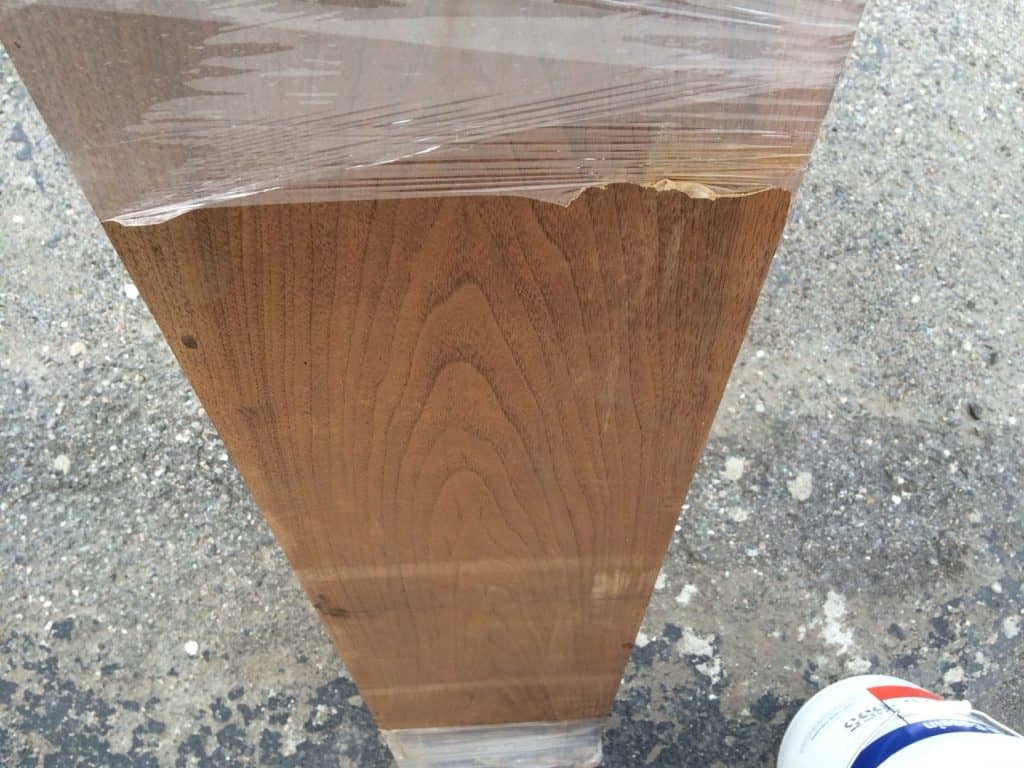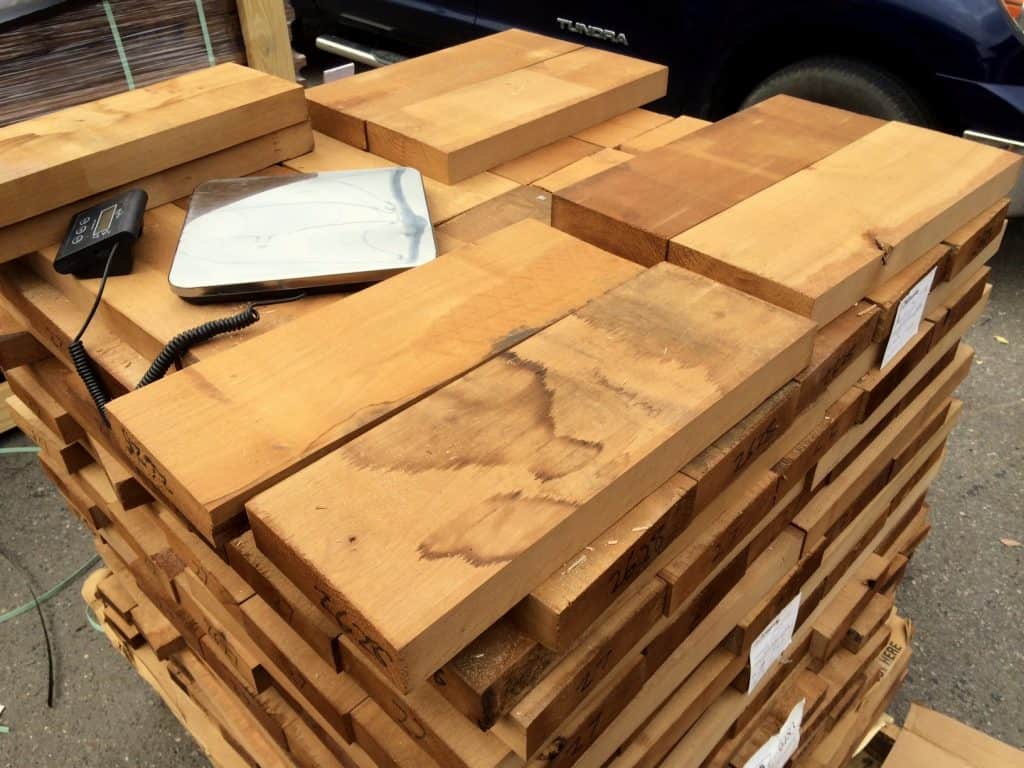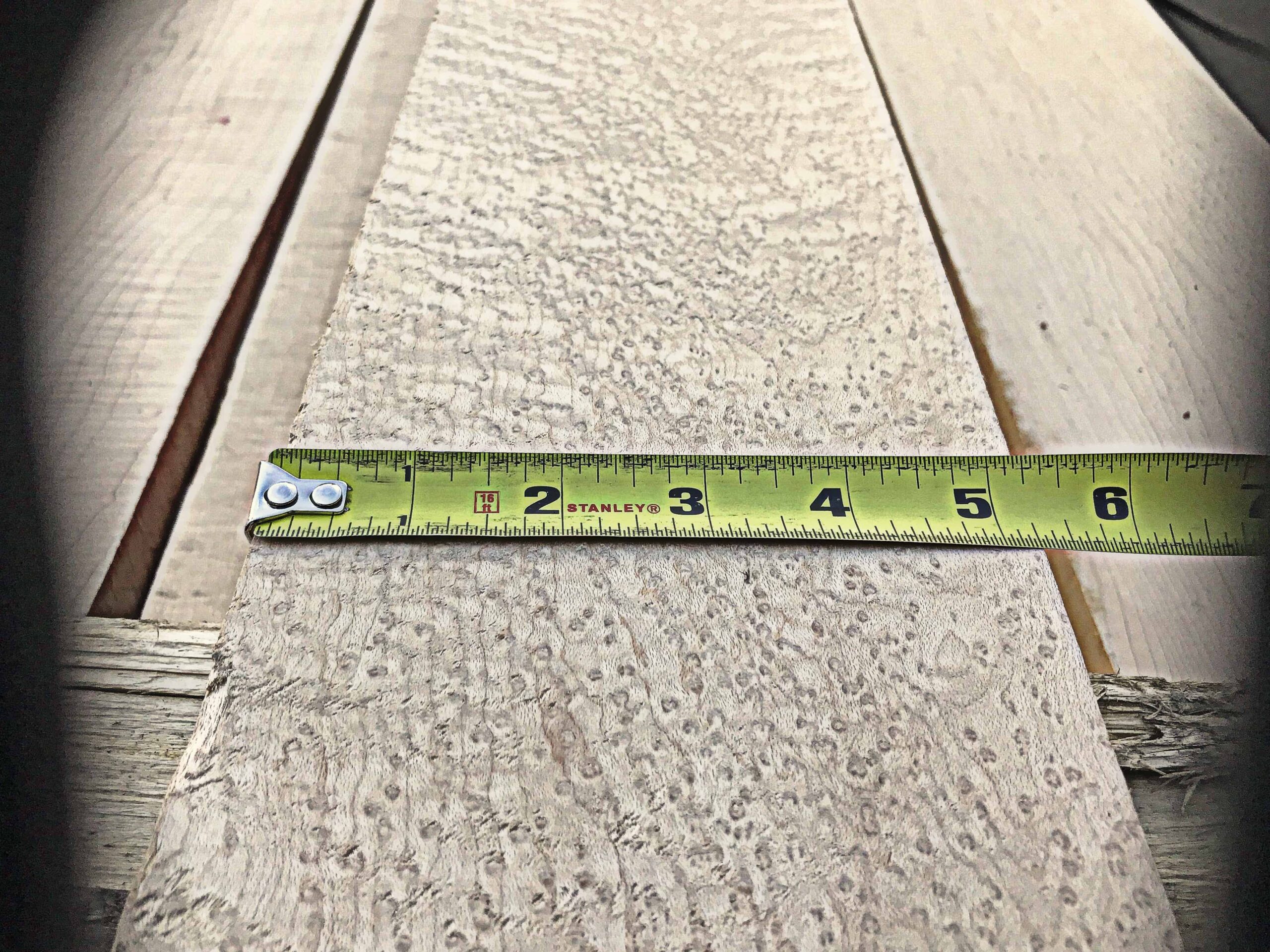What is Roasted Wood and How Is Hardwood Lumber Torrefied?
Roasted wood is wood that has been thermally modified at high temperatures, often through a secondary kiln process.
Roasted wood, sometimes called thermally treated, tempered vulcanized or torrefied, is ideal for environments with high or varying moisture levels. Of course, traditionally dried hardwoods also acclimate to their environment. However, the roasting process severely limits the wood’s range of moisture variation.
Additionally, torrefied wood darkens which accentuates chatoyancy, grain and figure.
View this post on InstagramA post shared by Commercial Forest Products (@commercialforest) on

What Happens When Wood is Torrefied in a Roasting Kiln?
When wood is exposed to the high heat temperatures of the roasting process, its cellular structure collapses. As a result, the wood does not shrink or expand significantly in response to moisture level changes.
Popular Woodworking describes the roasting process as follows:
Making TMW is a complicated, four-step process. To start off, the untreated lumber is dimensioned at the sawmill. Then it’s brought to the kiln and the first step begins: slowly heating the wood to 212 degrees. In the second step, the wood is preconditioned by drying it to nearly 0% moisture content.
This wood resists decay, but it’s totally free of chemicals.Now it’s ready for the crucial third step, where the temperature of the wood is raised to 374-482 degrees for several hours. At this high temperature the natural sugars in the wood are converted into substances that all the agents of rot—insects, mold and fungus—cannot eat. In the final step, the wood is cooled and some moisture is restored, bringing it up to around 6% to 7% MC.
source: Stanton, C. (25 March, 2014) Popular Woodworking, Thermally Modified Wood, https://www.popularwoodworking.com/projects/thermally-modified-wood/.
Roasting Darkens Wood’s Appearance
Additionally, torrefaction changes the appearance of wood. The color tone of the wood darkens in proportion to the kiln temperature and the kiln time.
Several years ago, a client asked us to roast Eastern Rock Sugar Maple wood. However, they wanted the outbound color to look like dark ebony wood rather than the light brown color tone we normal produce. To do this, we used a very high kiln temperature and left the wood in the kiln for longer than usual.
The hardwood maple turned ebony black. Unfortunately, it also imploded. The wood color was great but it became weak and brittle. The cells collapsed to the point that the outbound maple was honeycombed and unusable.

Wood Weight Reduction From Torrefaction
Thermally treating wood also reduces the wood’s weight. The weight lost reflects the amount of moisture removed during the kiln process. Thus, the potential water weight loss is not dramatic.
I compare it to a boxer who spends a few hours in the sauna prior to weigh in. Any weight loss depends on how long he/she stays in the sauna. However, that weight loss is limited to water weight that can be safely shed. It follows that attempting to eliminate all water weight is unsafe.
To illustrate, a traditionally kiln dried maple board has a moisture content of 8%. If after torrefaction that drops down to 5% moisture content, the weight loss = 3% of the weight of water. Similarly, basswood may drop from 10% moisture content down to 6%.
Thermally Treating Wood Changes Its Dimensions
Roasting causes wood to shrink. For some reason, this often catches people by surprise.
Anyone who has air-dried lumber knows that wood shrinks significantly from the time that it is green to the time that it reaches acclimation.
The shrinkage from roasting is often only in the 1/16″-1/8″ range. However, if the wood enters the roasting kiln at the net finish dimensions, you have a problem.
Torrefication Weakens Wood Strength
Because tempered wood becomes more stable, many woodworkers incorrectly assume it also becomes stronger. In fact, the opposite is true.
When cells collapse and moisture dissipates from wood , it loses strength and pliability. In most cases, the loss is negligible. However, using the example of my maple-to-ebony experiment above, the wood became unusable.
To illustrate, imagine finding a freshly felled 5″ diameter green log sitting on the forest floor. Despite the small diameter, you cannot snap the log using your hands. However, if that log sits for 10 months on the forest floor before spending 5 hours in a camp fire, it becomes brittle and breakable.
This occurs as a direct result of the log’s moisture loss and cell damage.

When Should You Use Roasted Wood?
Basically, when wood needs to remain stable and flat, roasting helps a lot. Any situation where the structural integrity of wood faces environmental moisture is a good time to use thermally treated wood. Common applications include:
- Musical Instrument Wood
- Siding
- Paneling
- Mouldings
- Flooring
- Exposed Exterior Wood
- Magic Wands
Accordingly, we supply roasted maple, roasted alder, roasted mahogany, roasted swamp ash and many other roasted woods. Uses range from instrument wood for guitars, basses and other musical instruments to flooring and millwork. Additionally, tempered tonewoods may resonate louder, or at least differently than non-tempered woods.

Why Roast Birdseye Maple?
Figured maple woods are interesting to look at. However, many figured maples are inherently unstable. Thus, roasting fixes many of the stability issues that make figured maples difficult to use.
Birdseye Maple is perhaps the best example of this. The larger and higher density the birdseye is, the more desirable it is from a consumer standpoint.
However, poor growing conditions cause the birdseye figuring. The figuring is actually small clusters of tiny knots. Accordingly, the wood fiber is not consistent and uniform. As a result, birdseye maple does not dry as consistently as unfigured maple.
Because of birdseye maple’s instability, many musical instrument manufacturers avoid using it for guitar neck wood. However, torrification greatly reduces those concerns.
Can You Roast Woods at Home?
Popular Woodworking has an interesting article on a DIY method for roasting woods. The article explains how it can be done in a conventional kitchen oven. Although the kiln mechanisms may be different, the concepts are the same.
Along the same lines, some of members at Lumberjocks attempted to roast wood in a kitchen oven.
However, I have not tried this myself. Attempt at your own risk. It is an interesting read, though!
Hardwood Lumber
Wood for Making
The Hardwood Lumber company known as Commercial Forest Products manufactures custom hardwood floors, wood mouldings, and hardwood components. If there is a hardwood need, we can help.
Swamp Ash
Swamp ash is a name for certain trees of the Fraxinus genus. Commonly found in swamps and wetlands within the Southern United States, it is commonly used in luthiery or guitar making.
Limba Wood: Black & White
Black Limba and White Limba (Terminalia superba, the superb terminalia, limba, or afara, korina, frake, African limba wood, ofram) is a western African wood of the Combretaceae family. Used for Guitar building and game calls, it is known for variegated colors.
Honduras Mahogany | Genuine
Genuine Mahogany (Swietenia macrophylla) commonly known as mahogany, Honduran mahogany, Honduras mahogany, big-leaf mahogany, or West Indian mahogany, is a species of the Meliaceae family with a pink to reddish brown color tone.. Long a favorite of fine furniture and pattern makers, it has excellent machining properties.
Birdseye Maple
Birdseye maple (or bird's eye) is a rare figure which typically refers to Acer saccharum. However, birdseye describes tiny knots in the grain which resemble small bird's eyes, rather than a particular maple species. Birdseye Maple is used for wood inlays, furnture turnings, guitar necks and wood veneer.
Lumber Prices Today
Lumber trades as a commodity on the NASDAQ stock exchange under the symbol LBS - Random Length Lumber Futures. While this lumber price does not specifically address the hardwood lumber market, it gauges the wood and wood products market well. .
Quilted Maple
Quilt or quilted maple, like Birdseye, refers to a type of figure in maple wood rather than a specie.. A waving quilt--like pattern is seen on the flat-sawn grain of the board. Typically, quilted maple is associated with Big Leaf western Maple (Acer macrophyllum)

